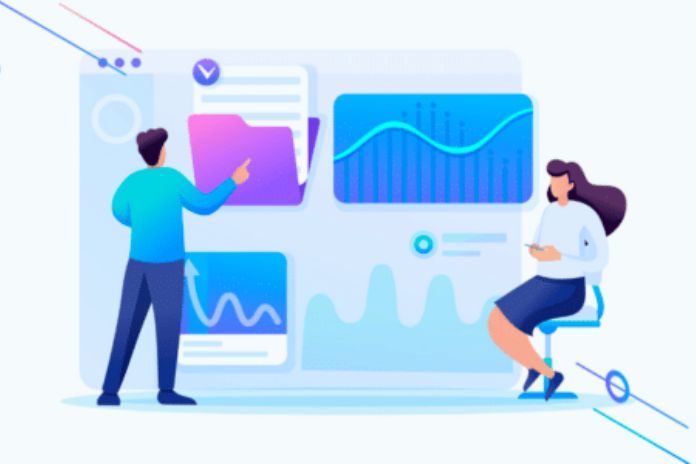How to put Google Analytics data on sites, pages, and social media at the service of a business: from the creation of a Buyer Persona to the Marketing Funnel phases
Google Analytics is one of the market’s most profound and versatile tools. On the one hand, it is perfect for studying the performance of sites, pages, and social networks: web & social media analytics.
On the other hand, the reports available within it are the daily bread of the vast majority of global marketing departments. Google Analytics is an almost indispensable tool for online business, considering that it can accompany a company from the first contact with potential customers to the actual sale of a product or service.
Use Google Analytics For Marketing And Business
- Google Analytics is a remarkably complex platform that offers users many types of data. In general, it is a web analytics and social media analytics tool which allows you to evaluate numerous online performances.
- Over the last few years, Google Analytics has established itself as one of the most indispensable tools in various business fields. It is, in fact, a service that can direct marketing actions and strategies at all levels.
- Starting from the classic creation of a Buyer Persona: a profile, or set of shapes, which identify the ideal customer in terms of age, gender, origin, interests, purchases, and online activities.
- Google Analytics metrics allow you to study visitors in terms of activity on the site or page in question. From the number of views to the average duration of each session.
- Up to the identification of new users and the so-called number of sessions per user: an average value that helps to understand how many pages are visited before leaving the site or page.
- Google Analytics can help marketers identify the Buyer Persona and the four main phases of a Funnel.
- But there are more, considering that Google Analytics also allows insight into the language spoken by the visitor user, his country, and even his city of origin.
- The tool is not limited to preliminary marketing operations. On the contrary, it is perfect for accompanying the various steps of a funnel. Funnel marketing (also known as Sales Funnel, Purchase Funnel, or Buying Funnel ) is a path that brings the consumer closer to purchasing a good or service.
- It develops in different steps, generally represented graphically by a ” funnel. ” A drawing that helps to understand how, step by step, the number of customers who complete the process will inevitably be less than that of customers who have started it.
- The traditional model of Funnel Marketing provides for a subdivision into four macro-phases: the first is that of awareness, while the second is that of interest. The third phase is a consideration ( consideration ), and the last one is purchase ( purchase ).
What Analytics For Funnel Marketing: Monitor The Volume
- When tracking funnel marketing steps, the data is usually classified according to three characteristics: volume, speed, and quality. Data specifics can be quickly identified using Google Analytics.
- Volume refers to the traffic on a monitored site or page. But also the number of contacts or sales generated by sponsorship or any other promotional activity.
- Speed takes into account time: the hours or maybe days it takes to get specific numbers. Finally, quality refers to the possibility that the user moves to the next step of the Funnel and, more generally, to the final conversion potential.
- The Google Analytics metrics to consider vary based on the type of feature you want to highlight. The volume category is undoubtedly the most complex to monitor from a Funnel perspective: its metrics vary according to the phase in which it is located.
- In the awareness phase, the user should consider the traffic, i.e., the number of visitor users. But also so-called impressions: a variable metric that helps to frame the visibility achieved on social media and search engines.
- And then the metric that relates impressions and traffic volume, or the CTR ( Click-Through-Rate ). The mathematical formula for CTR is impressions divided by traffic volume. The result obtained is expressed as a percentage.
- In the later phases of the Marketing Funnel (interest, consideration, and purchase), the metrics to consider to frame the volume vary, moving toward sales and conversion rates. More precisely, the conversion rate between traffic and contacts and that between contacts and customers.
Which Analytics For Funnel Marketing: Monitor Speed And Quality
The Google Analytics metrics that help frame the speed are the ones described that allow you to monitor the volume. The user must then study the traffic, impressions, and CTR again.
The difference is that all the above data must be related to time: the number of hours, days, or weeks necessary to achieve any result.
Speed is one of the essential features in marketing and business. Before even starting to set up a social media campaign with related analytics, it is necessary to clearly understand the relationship between the desired objective and the time required to achieve it.
Finally, space for data that can be analyzed with Google Analytics that allow you to interpret quality from a Funnel Marketing perspective. Also, in this case, we return to elements already considered, such as the conversion rate between traffic and contacts and between contacts and customers.
In addition, quality is usually inextricably linked to the choice of keywords used. This is why large Funnel Marketing operations often need to be separated from an accurate SEO analysis.
Also Read: How To Improve Your Visibility On LinkedIn

